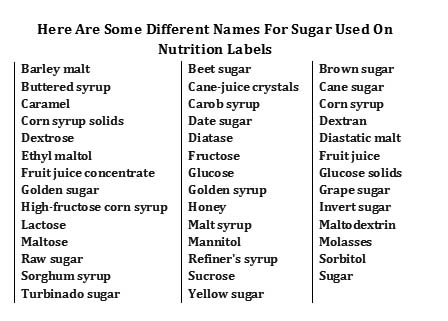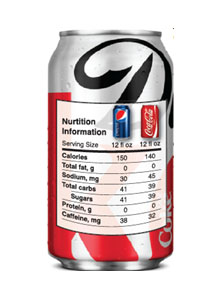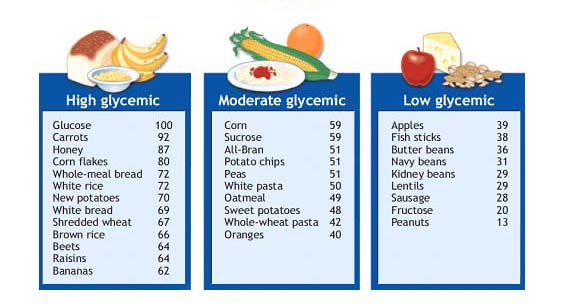In the previous two Health Yourself columns Professor Victor Katch discussed proteins and lipids. Here he aims to provide a basic “primer” on sugar (more properly termed carbohydrate), perhaps the most misunderstood nutrient among the macronutrients. In next month’s column he will discuss the many controversies regarding how much and what kinds of foods you should be eating to “health yourself.”
A brief history of sugar
Most likely, the first use of sugarcane by humans was to chew it to obtain its “sweet juice.” Its use as a confectionary is legendary and widespread throughout history, as sugar has found its way into almost every type of packaged and processed food we encounter today.
Less known perhaps are sugar’s medicinal properties. Evidence of sugar as a healing agent appears as far back as 500 BC in Sanskrit texts from northern India. Healers applied sugar paste to infections and wounds to draw out moisture, dehydrating and ultimately killing bacteria.
Honey, in fact, has a long history in healing; its salutary effects stem primarily from its antimicrobial properties. Research documents honey’s function as an anti-inflammatory agent, reducing both swelling and pain. Honey also has shown to be extraordinarily effective in treating wounds, burns, and surgical incisions, and is even known to reduce scarring. In addition, honey functions as a moisturizer, a treatment for sunburn, and an all-purpose skin softener.
Sugar buzz
Sugar’s many uses spread from northern India eastward to China and (along with the cultivation of sugarcane) westward into Persia, eventually reaching the east coast of the Mediterranean about 600 AD. The Portuguese in the 15th century introduced commercial sugarcane production (or “sweet salt,” as sugar was known) on nearby Mediterranean islands (especially Madeira) as a means of financing commercial enterprises in the East Indies.
In subsequent centuries, sugar became intimately associated with European colonization of tropical portions of the New World. By the 1700s the Caribbean emerged as the largest source of the world’s sugar supply. The trade of sugar, mostly in its liquid form of molasses, originated from the Caribbean to Europe or New England, where it was distilled into rum.
Profits from sugar sales were used to purchase manufactured goods, which were then shipped to West Africa, where they were bartered for slaves. The slaves were then brought back to the Caribbean to be sold to sugar planters. Profits from the sale of slaves were then used to buy more sugar, which was shipped to Europe, etc. By 1750 sugar surpassed grain as the most valuable commodity in European trade. The demand for labor that it created led to the transatlantic slave trade that carried millions of Africans to the Americas.

Kinds of carbohydrates
Carbohydrates classify as monosaccharides, oligosaccharides, or polysaccharides. It is vital to understand differences between these types of sugar. Most people are in a perpetual state of confusion, and blame sugar for everything from their sagging abdomens to erratic mood swings. This often results in bizarre eating practices (read diets).
Here’s what you need to know about the different types of sugars.
Monosaccharide represents the basic carbohydrate unit. There are three major monosaccharides:
- Glucose, also called dextrose or blood sugar, is formed naturally in food or in the body through digestion of other carbohydrates. After absorption by the small intestine, glucose either becomes available as an energy source for cellular metabolism; forms glycogen for storage in the liver and muscles; or converts to fat and is stored throughout the body.
- Fructose (fruit sugar or levulose), the sweetest sugar, occurs in fruits and honey. Fructose also serves as an energy source but rapidly moves from the digestive tract into the blood or liver to convert to fat, and also glucose.
- Galactose does not exist freely in nature; rather, it combines with glucose to form milk sugar in mammary glands of lactating animals.
Oligosaccharides, another type of carbohydrate, form when 2-10 monosaccharides bond chemically. The major oligosaccharides, the disaccharides, or double sugars, form when 2 monosaccharide molecules combine.
Disaccharides include:
- Sucrose, i.e., table sugar (glucose + fructose), the most common dietary disaccharide that contributes up to 25 percent of total calories consumed in the United States. It occurs naturally in most carbohydrates foods, especially beet and cane sugar, brown sugar, sorghum, maple syrup, and honey.
- Lactose (glucose + galactose), also a disaccharide, is notfound in plants, but exists in natural form only in milk, as milk sugar. The least sweet of the disaccharides, lactose when artificially processed often becomes an ingredient in carbohydrate-rich, high-calorie liquid meals.
- Maltose (glucose + glucose), the third disaccharide, occurs in beer, breakfast cereals, and germinating seeds.
Polysaccharides represent another type of carbohydrate and are described by linkage of three or more (up to thousands) mono- and disaccharide molecules. Polysaccharides include both plant and animal sources.
- Starch and fiber: The plant polysaccharides
Starch, the storage form of carbohydrate in plants, occurs in seeds, corn, and various grains of bread, cereal, pasta, and pastries. The term complex carbohydrate describes dietary starch, and accounts for about 50 percent of the typical individual’s total calorie intake.Fiber, classified as a nonstarch, structural polysaccharide, includes cellulose, the most abundant organic molecule on Earth. Fiber occurs exclusively in plants comprising the structure of leaves, stems, roots, seeds, and fruit coverings.
Much of the interest in dietary fiber originates from studies that link high fiber intake with a lower occurrence of obesity, systemic inflammation, insulin resistance and type 2 diabetes, hypertension, metabolic syndrome, digestive disorders, elevated blood cholesterol, colorectal cancer, and heart disease. Water-soluble, mucilaginous fibers such as psyllium seed husk, ß-glucan, pectin, and guar gum, present in oats, beans, brown rice, peas, carrots, cornhusks, and many fruits.
Americans consume about 12-15 g of fiber daily, far short of the recommended 38 g for men and 25 g for women up to age 50. Men and women over age 50 should consume 30 g and 21 g, respectively.
- Glycogen: The animal polysaccharide
Glycogen, the storage carbohydrate within mammalian muscle and liver, is a large polysaccharide ranging from a few hundred to 30,000 glucose molecules linked together.A well-nourished 80-kg man stores approximately 500 g of carbohydrate. Of this, muscle glycogen accounts for the largest reserve (approximately 400 g), followed by 90-110 g as liver glycogen (highest concentration, representing 3-7 percent of the liver’s weight), with only about 2-3 g as blood glucose. Each gram of either glycogen or glucose contains approximately 4 calories (kcal) of energy. This means the average person stores about 2,000 kcal as carbohydrate — enough total energy to power a 20-mile continuous run at high intensity.
Not all carbohydrates are physiologically equal: The glycemic index
Absorption rates of different carbohydrate sources possibly explain the link between carbohydrate intake and diabetes, and excess body fat. Scientists classify foods into high- and low-glycemic index foods, determined by how quickly the food digests and raises blood-sugar levels, two hours after ingestion. Values are compared to 50 g of pure glucose, which has a glycemic index value of 100. The figure below shows examples of a few high- , low-, and moderate-glycemic foods.
Foods containing dietary fiber slow carbohydrate digestion, minimizing surges in blood glucose. In contrast, low-fiber processed starches (and most simple sugars) digest quickly and enter the blood at a relatively rapid rate (high glycemic index).
The average American currently consumes 22-28 teaspoons of added sugars daily (equivalent to 350-440 empty calories per day; and about 70 lbs. per year). Most of this sugar comes in the form of high-fructose corn syrup and ordinary table sugar (sucrose). The rapid surge in blood glucose after consuming certain refined, processed starches and simple sugars (high glycemic) has three effects:
- Stimulates overproduction of insulin by the pancreas to accentuate hyperinsulinemia
- Elevates plasma fat concentrations
- Accelerates fat synthesis.
Consistently high intake of high-glycemic foods, including added sugars, reduces the body’s sensitivity to insulin, thus requiring progressively more insulin to optimize blood-sugar levels. Type 2 diabetes results when the pancreas cannot produce sufficient insulin, or cells become insensitive to the effects of insulin to regulate blood glucose, causing it to rise.
While high-glycemic foods are OK in moderation, it is usually best to opt for low- or moderate-glycemic options whenever possible. And, it is a good idea to minimize sugary beverage intake, including fruit juices, to lower the risk of obesity, diabetes, heart disease, gout, and dental cavities.
Consistent light-to-moderate physical activity performed on a regular basis exerts a potent influence to improve insulin sensitivity, thereby reducing the insulin requirement for a given glucose uptake.
Too much sweet stuff, period
The American Heart Association recommends limiting daily intake of added sugars to 5 teaspoons for women and 9 teaspoons for men. For reference, one 12-ounce can of cola contains about 8 teaspoons of added sugar, for about 130 calories. Most American women and men should eat or drink no more than 100 and 150 calories per day from added sugars, respectively. Unfortunately, Americans are consuming 22-30 teaspoons of the sweet stuff each day.
 Nearly half of Americans over age 2 drink at least one sugary beverage every day. Some 70 percent of boys ages 2-19 drink sugary beverages daily. One fourth of Americans consume 200 or more calories daily from sugary soft drinks, and 5 percent slurp at least 567 liquid calories each day. That 5 percent population is consuming what amounts to 1,460 cans of soda per year. And at 207,000 calories, this theoretically equates to 60 pounds of body fat! For caffeine junkies, those 1,460 sodas contain about the same amount of caffeine (some 55,000 mg) as 367 tall, 12-oz. cups of Starbucks Caffe Americano.
Nearly half of Americans over age 2 drink at least one sugary beverage every day. Some 70 percent of boys ages 2-19 drink sugary beverages daily. One fourth of Americans consume 200 or more calories daily from sugary soft drinks, and 5 percent slurp at least 567 liquid calories each day. That 5 percent population is consuming what amounts to 1,460 cans of soda per year. And at 207,000 calories, this theoretically equates to 60 pounds of body fat! For caffeine junkies, those 1,460 sodas contain about the same amount of caffeine (some 55,000 mg) as 367 tall, 12-oz. cups of Starbucks Caffe Americano.
The bottom line: Stay away from liquid calories!
There are no absolute minimum or maximum recommendations for total carbohydrate intake. But for a sedentary 70-kg (150-lb.) person, daily carbohydrate intake typically amounts to about 300 g or 40-50 percent of total calories.
For more physically active people and those involved in exercise training, carbohydrates should equal about 60 percent of daily calories or 400-600 g, predominantly as unrefined, fiber-rich fruits, grains, and vegetables.
During periods of intense exercise training, carbohydrate intake should increase to 70 percent of total calories, or approximately 8-10 g per kg of body weight.
Carbohydrates: Four important functions
Sources of nutritious dietary carbohydrate consist of plant polysaccharides, including fruits, grains, and vegetables. These “good sugars” come in a nutrient-dense package with none of the downsides of added sugars, and they perform valuable functions in the body. These include:
Energy Source. Carbohydrates primarily serve as fuel, particularly during intense physical activity. Sufficient daily carbohydrate intake is needed to maintain the body’s relatively limited glycogen stores. However, once cells reach their maximum capacity for glycogen storage, excess sugars of any kind convert to and store as fat. This interconversion of sugar to fat (and protein to fat) for energy storage explains how body fat can increase when intake of dietary carbohydrates exceed energy requirements, even if the diet contains little fat.
Protein-preserver. Adequate carbohydrate intake helps to preserve tissue protein loss. Glycogen depletion triggers glucose conversion from protein; this conversion can strain the body’s protein levels, and the kidneys.
Metabolic primer/prevents ketosis. Components of carbohydrate breakdown serve as “primer” substrate for fat breakdown. The lack of adequate carbohydrate intake produces incomplete fat breakdown with accumulation of ketone bodies. In excess, ketones increase body fluid acidity and produce a potentially harmful acidic condition called acidosis or, specifically with regard to fat breakdown, ketosis.
Fuel for the central nervous system. The central nervous system requires an uninterrupted stream of carbohydrate for proper function. Under normal conditions, the brain metabolizes blood glucose almost exclusively as its main fuel source.
References:
- Breasted, J.H. 1930. The Edwin Smith surgical papyrus. Chicago: University of Chicago Press.
- Chad, G. et al. April 2010. The Utility of Sugar for Complicated Wounds: An Old Solution Worth Revisiting. Surgical Infections, 11(2):187.
- Forrest, R.D. 1982. Early history of wound treatment. J R Soc Med;75(3):198.
- Gordon, H., et al. 1985. Sugar and wound healing. Lancet; 2(8456):663.
- McArdle, W.D., Katch, F.I, Katch, V.L. Exercise Physiology: Nutrition, Energy and Human Performance. 2014. Eighth Edition. Lippincott Williams & Wilkins. Baltimore, MD.
- Tanner, A.G. 1998. Successful Treatment of Chronically Infected Wounds with Sugar Paste, Eur J Clin Microbiology Infectious Diseases, (7), 524-25.
- www.reuters.com/article/2008/09/09/idUS206958+09-Sep-2008+PRN20080909




Maria Lubienski - 1983
How does xylitol from plant sources (often corn) compare to the sugars you have written about?
Reply
Christina Snyder - 1990 Bachelor of Architecture
Xylitol is not a sugar, but a naturally occuring sugar alcohol that is digestable to humans and is sourced from hardwood trees (best) or some crops like corn (hazardous if grown with pesticide applications). It is not digestable to the bacteria that live on your teeth and cause cavities, so this explains, in part, why it is protective for your teeth unlike sugars and sorbitol (the sweetener in most toothpastes). Another reason it is good for your teeth is that it can help keep your mouth slightly alkaline, which is a bad environment for the harmful bacteria to grow in, but good for your body.
Reply
Al Keali'i Chock - Rackham, 1953-1955 (AbD)
The Lapita, a maritime people, carried the sugar cane further eastward, into, and throughout the Pacific. A derivative group, the Polynesians, went eastward to Rapa Nui (Easter Island) and northward to Hawai’i. Sugar always makes “the medicine go down.”
Reply
Frederick E.'Ted' Ludwig II MD FACS - 1961 LS&A: 1966 Medicine
I do not see reference to the historical record re’ sugar in the New World. Maple trees provided an important source of sugar for Native Americans particularly in the northern part of Michigan. Of the commonly used sugars in our diet maple syrup has a lower glycemic index with the added benefit of vitamins and minerals, not present in corn syrup and even honey. I enjoyed your treatise.
Sincerely, Ted Ludwig MD Ludhaven Sugarbush.com
Reply
detox diet
Good to know. Thank you for sharing an informative and helpful article. I hope more studies will shed light on this topic.
detox diet
Reply